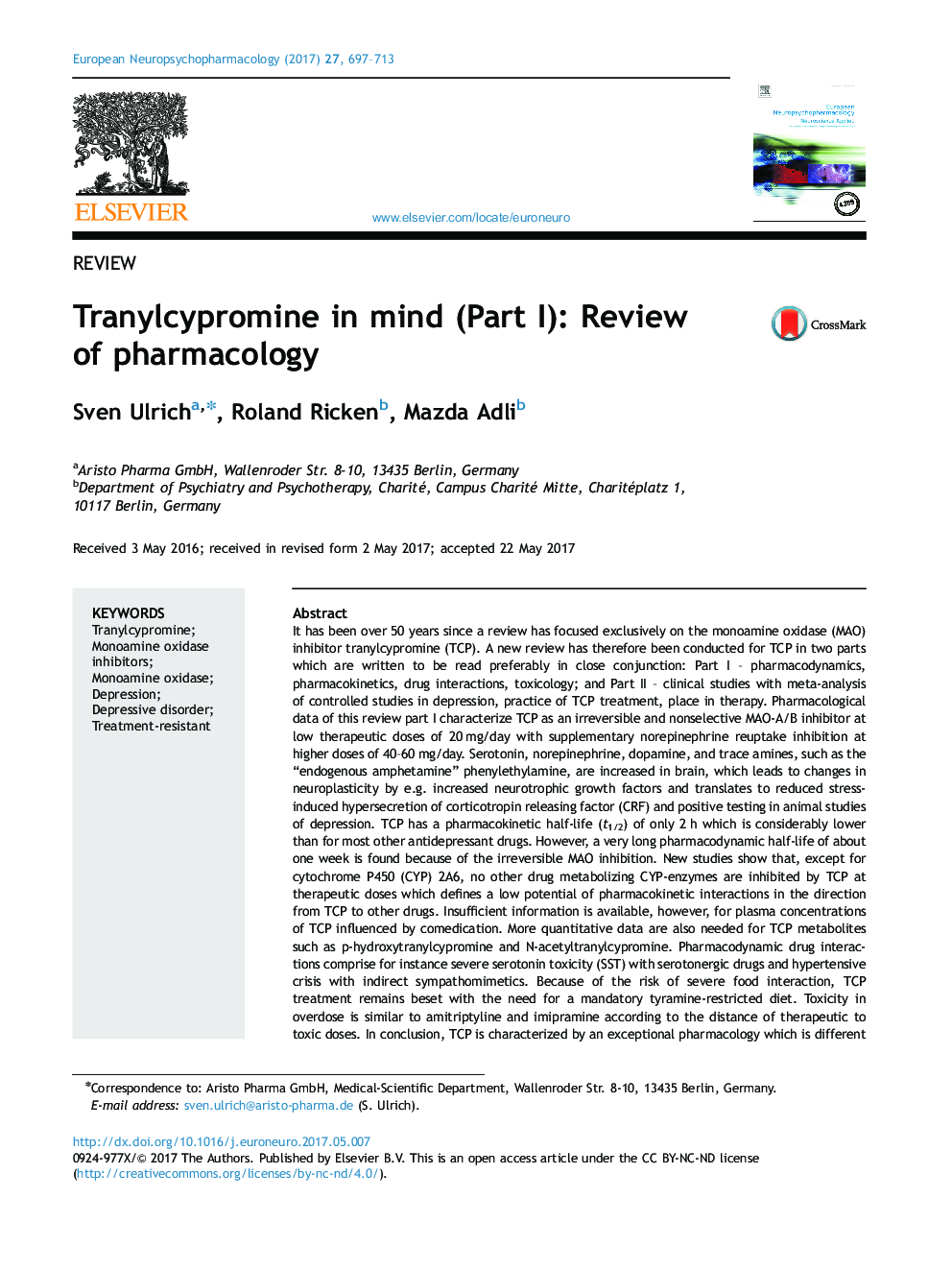| کد مقاله | کد نشریه | سال انتشار | مقاله انگلیسی | نسخه تمام متن |
|---|---|---|---|---|
| 4930367 | 1363336 | 2017 | 17 صفحه PDF | دانلود رایگان |
It has been over 50 years since a review has focused exclusively on the monoamine oxidase (MAO) inhibitor tranylcypromine (TCP). A new review has therefore been conducted for TCP in two parts which are written to be read preferably in close conjunction: Part I - pharmacodynamics, pharmacokinetics, drug interactions, toxicology; and Part II - clinical studies with meta-analysis of controlled studies in depression, practice of TCP treatment, place in therapy. Pharmacological data of this review part I characterize TCP as an irreversible and nonselective MAO-A/B inhibitor at low therapeutic doses of 20Â mg/day with supplementary norepinephrine reuptake inhibition at higher doses of 40-60Â mg/day. Serotonin, norepinephrine, dopamine, and trace amines, such as the “endogenous amphetamine” phenylethylamine, are increased in brain, which leads to changes in neuroplasticity by e.g. increased neurotrophic growth factors and translates to reduced stress-induced hypersecretion of corticotropin releasing factor (CRF) and positive testing in animal studies of depression. TCP has a pharmacokinetic half-life (t1/2) of only 2Â h which is considerably lower than for most other antidepressant drugs. However, a very long pharmacodynamic half-life of about one week is found because of the irreversible MAO inhibition. New studies show that, except for cytochrome P450 (CYP) 2A6, no other drug metabolizing CYP-enzymes are inhibited by TCP at therapeutic doses which defines a low potential of pharmacokinetic interactions in the direction from TCP to other drugs. Insufficient information is available, however, for plasma concentrations of TCP influenced by comedication. More quantitative data are also needed for TCP metabolites such as p-hydroxytranylcypromine and N-acetyltranylcypromine. Pharmacodynamic drug interactions comprise for instance severe serotonin toxicity (SST) with serotonergic drugs and hypertensive crisis with indirect sympathomimetics. Because of the risk of severe food interaction, TCP treatment remains beset with the need for a mandatory tyramine-restricted diet. Toxicity in overdose is similar to amitriptyline and imipramine according to the distance of therapeutic to toxic doses. In conclusion, TCP is characterized by an exceptional pharmacology which is different to most other antidepressant drugs, and a more special evaluation of clinical efficacy and safety may therefore be needed.
Journal: European Neuropsychopharmacology - Volume 27, Issue 8, August 2017, Pages 697-713
